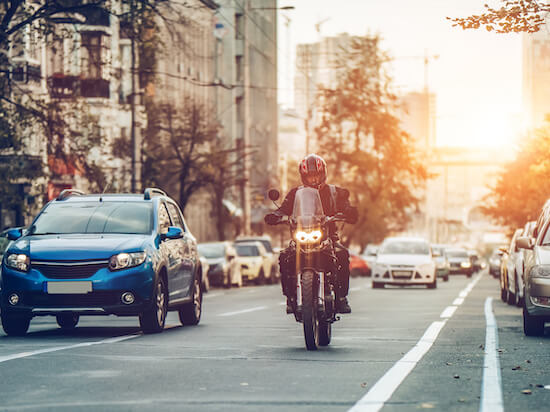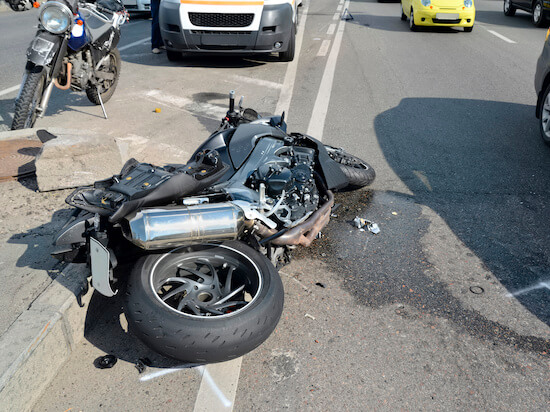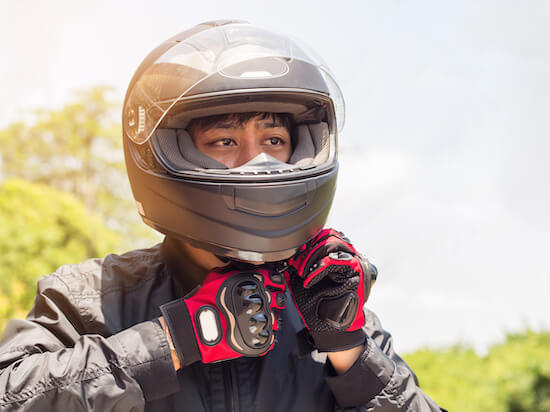Riding a motorcycle is not just a hobby, for most it’s a lifestyle. Riders enjoy the camaraderie, adventure, and the open road. California, Florida, and Texas tend to have the most motorcycle registrations in America. In 2018, the U.S. had 8.3 million on-road motorcycles registered. The following year: 8,596,314
Use eTags© to Quickly Complete Your DMV Service. Renewals, Title Transfers and More, All Online!
More motorcycles, more driving safety
In just the first few months of 2021, motorcycle sales in the U.S. increased 37.2% compared to 2020 according to the Motorcycle Industry Council. Dual-sports motorcycles alone were up 47% compared to the year before, while off-road bike sales went up 34.6%.

In 2019, California had 808, 377 motorcycle registrations while Ohio had 406,543
Driving safety for motorcycles involved not just the bike riders, but also all motorists sharing the road with them. Passenger car drivers, truck drivers, pedestrians, bicyclists, and other types of motorists can definitely share in the responsibility of keeping those who ride on two wheels safer.
The NHTSA says motorcycle riders keep being overrepresented in fatal traffic accidents. In 2019, 5,014 motorcyclists lost their lives while riding. All drivers should understand the challenges motorcycle riders face, from visibility to size. In fact, data show per vehicle miles traveled in 2019, motorcyclists were about 29 times more likely than passenger vehicle occupants to die in a motor vehicle crash and were 4 times more likely to be injured.
In 2021, Honda sold around 332,000 motorcycles to customers in North America
What other drivers can do to keep motorcyclists safe
The NHTSA says it’s usually the non-motorcycle driver who violates the motorcyclists right of way. Other drivers overlook riders because they’re a very small part of total traffic. People who ride bikes are not as visible in the mix of minivans, SUVs, pickup trucks, and everything else on the road.

Motorbikes aren’t designed to absorb impact
Vehicles in general are made to absorb the energy of an impact where there’s a crash, but motorbikes aren’t designed that way. So a motorcycle rider can be either thrown from the bike or directly hit by the other vehicle in the crash. So even an accident at low speeds is dangerous for a rider, and can create significant trauma.If a biker gets hit from behind, they can get pined to the ground right under the motorcycle or get dragged along the pavement if the car doesn’t stop fast.
Slow down your driving when going through intersections: One of the leading causes of accidents is the driver failing to notice the motorcycle rider at an intersection
Go for the quick shoulder check with blind spots
Bad weather, blind spots, cargo, and the like adds to the visibility issue. Be aware of your blind spots; don’t rely just on your mirrors, do a visual check (and even a quick shoulder check) before changing lanes, turning or merging onto traffic. And watch out for your high beams in inclement weather or at night, headlights are more blinding to bikers so you can dim them when passing riders.

Motorcycle riders need enough time to react to road conditions, so make sure you’re not driving too closely to two wheelers. A fender bender can become a life-threatening situation for motorcyclists. In bad weather, give yourself about four to five seconds of stopping time.
Left turns can be particularly dangerous for motorcyclists due to your blind spots
What motorcyclists can do to ride more safely
In most states you can ride a motorcycle with a motorcycle endorsement on your driver license or hold a “Motorcycle Only” license. Learning how to properly ride can greatly improve your safety on the road. Courses include in-class like education plus hands-on practice. Shifting gears, mounting/dismounting procedures, negotiating curves and lane changes, and progressive braking pressure to stop without skidding, are just some of the skills you can get. Don’t forget, motorcycle registrations are also part of riding; you have to regularly renew bike tags just like other vehicles.
In 2019, for every 100,000 motorcyclists there were 975 injuries
Gear up right
The Motorcycle Safety Foundation wants all riders to wear a full-coverage DOT-approved helmet for the best protection, even if your state doesn’t have a helmet law like in Illinois, Iowa, and New Hampshire. The MSF also suggests motorcycle gloves, long-sleeved, protective clothing and boots covering the ankle should also be standard equipment.

Just like when driving any vehicle, when riding you shouldn’t consume any alcohol or engage in distractions such as texting. Try to always ride in such a way that you’re trying to maximize your position and exposure to other drivers to help with visibility. When riding, use your headlights all the time always be on the lookout for for hazards on the road like potholes, manhole covers, oil slicks, puddles, debris, railroad tracks and gravel.
